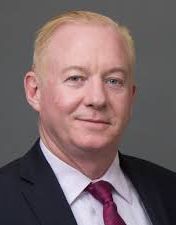Article
COVID-19 Only Adding to the Challenges Health Centers Face
Author(s):
National Health Center Week kicks off on August 9.
Larry McReynolds

Community health centers provide much more for their clientele then just medical advice and health care.
Because of the low income demographic often served at these facilities, health centers also serve as a place people can go to connect them to a world of different opportunities, from literacy and education programs to employment possibilities.
However, even in good times these centers can struggle financially. Factor in the ongoing coronavirus disease 2019 (COVID-19) pandemic might be creating an exceptionally difficult time for health centers across the country.
Larry McReynolds, Executive Director, Family Health Centers at NYU Langone, explained in an interview with HCPLive®, how health centers were able to weather the initial storm and switch to telemedicine to help maintain services.
“Well, it's certainly been very challenging, but I am very encouraged that health centers for the most part, were able to move from an in person face to face model to a virtual model very, very quickly,” he said.
The Nature of Health Centers
Health centers generate $12.6 billion in economic benefits for low-income, rural and inner city communities and create 143,000 jobs, while serving over 24 million patients in 6000 of in America’s most economically challenged neighborhoods.
The overall goal of health centers across the country is to increase access to care and reduce health disparities. This could mean serving patients who either do not have insurance or have insurance that other institutions do not want to take.
Health centers generally serve a high proportion of Medicaid recipient, as well as a large number of uninsured individuals. McReynolds said these patients can come with multiple social economic issues, including unstable housing, low literacy levels, low education levels, low income levels, and food insecurities.
“They need to be able to go to a place that doesn't ask the first question of ‘what's your insurance’ in order to get in the door to see a doctor,” he said. “So, health centers have a sliding fee scale, so that even the poorest of individuals can have access to care to see a doctor for very little or no money.”
The Impact of COVID-19
Those factors in normal times make it very difficult for health centers to even break even. However, the COVID-19 pandemic has made the situation even more untenable and difficult for health centers across the country.
McReynolds said one of the unfortunate byproducts of the situation is the NYU Langone Health Center was forced to lay off some workers, which more than 85% of health centers across the country were forced to do.
However, as case numbers began to improve, McReynolds said, Langone was able to rehire some of the laid off workers.
Like traditional doctor’s offices and hospitals, McReynolds said one of the tools health centers have successfully utilized during the ongoing pandemic has been telemedicine services. The popularity of these telehealth programs can be seen in Langone’s behavioral health programs, where McReynolds estimated a 130% increase in productivity from where they were before the pandemic.
The Future
Another service offered at the health center is a school-based program, with programs in more than 63 schools across New York City. However, the mass school closings forced the health center to temporarily halt their own programs.
“And so, it really just kind of compounded this disparity problem that COVID adversely affects Hispanics and blacks in infection rates and mortality,” McReynolds said. “And now the services that are designed to help those folks had to lay people off. So that's a very big challenge for fragile organizations that serve fragile populations.”
McReynolds also expects, should a vaccine gain FDA approval, that health centers will have a role in administering it to the public.
McReynolds said there have been a number of new pilot programs tried in an effort to reduce the burden on emergency room visits in favor of community health centers.
“The most successful pilot that I think will stay in place is that there will be community health workers or case workers and emergency rooms that will help those people that showed up to the emergency room when it wasn’t a real emergency and connect them with the primary caregiver in the community.”
Since the pandemic began, there have been an increase in the type of patients needing care, including cardiovascular issues, psychiatric conditions, sleep problems, and substance abuse.
While there are certainly financial worries, to compound what might be an increase in people needing medical assistance, Reynolds said there will always be a role for community health centers.
“I think that the biggest challenge is to, to reach out to patients to let them know that we're here for you regardless,” he said. “Regardless of if you just lost your job and now you don't have insurance anymore because there's 40 million newly unemployed people.
“We're here for you, regardless of whatever your health condition is,” he added. “It's really building on that trust factor of getting the patient to trust us and they have always trusted us because we don't judge them based on income or citizenship or language or anything.”


